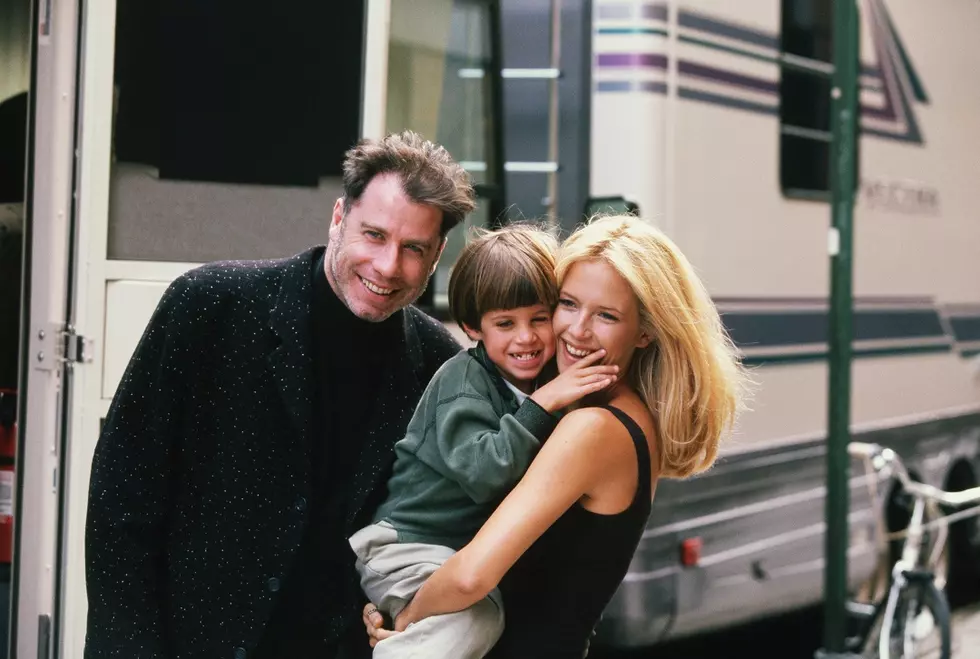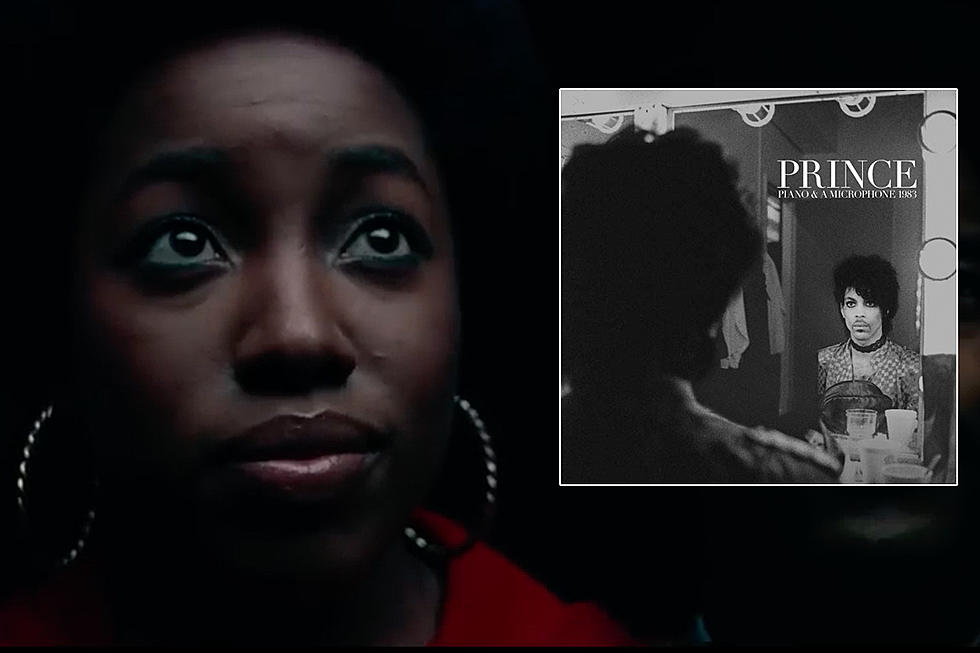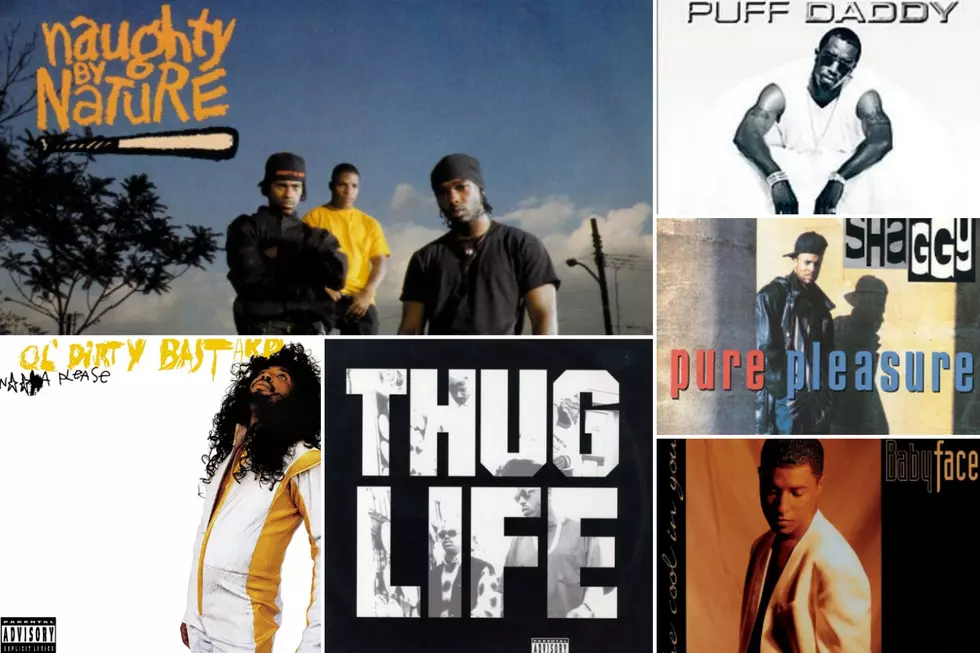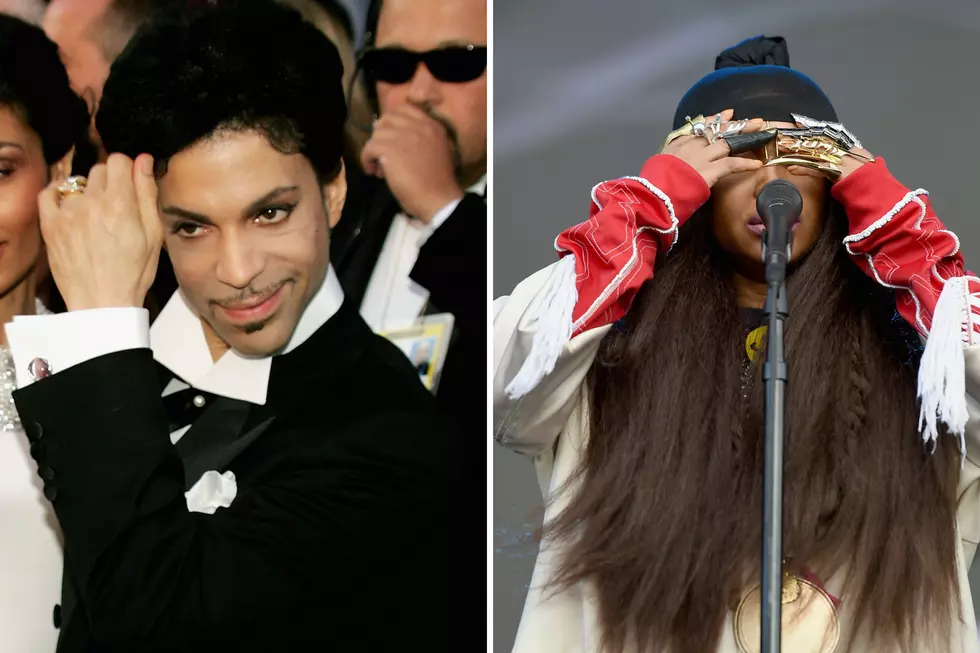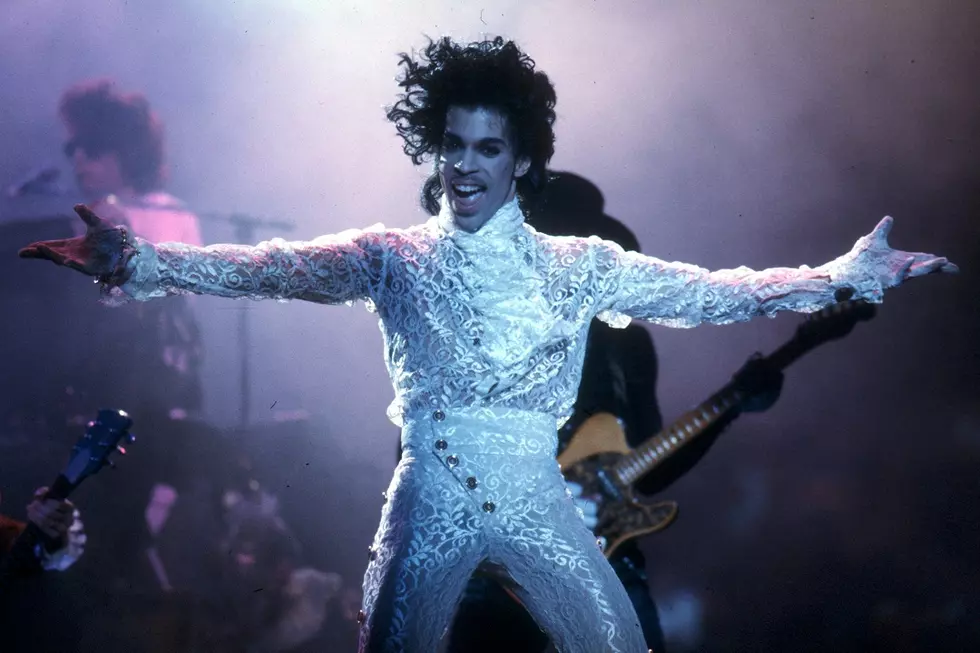
What It’s Like to Tour Prince’s Paisley Park Less Than a Year After His Death
One of the first things you see upon entering Paisley Park, Prince's infamous studio complex and residence, is his urn. As you might expect, it's not just any urn: The pop star’s remains are literally housed in a glass and ceramic scale replica of Paisley Park itself. On the front is an enormous, bejeweled and not-at-all-to-scale “Love Symbol,” the signature icon Prince introduced when he shed his name back in 1993. Inside the structure, which reportedly opens up like a dollhouse, is a small purple cube so bright it nearly gleams in a physical representation of its own cultural importance. And just as you’re staring at it and thinking, “this is the most Prince thing I could possibly imagine,” you look upstairs to the atrium’s second level and see Prince’s doves, Majesty and Divinity, appraising you from their cage above.
But that’s not the very first spectacle that welcomes guests who travel to Chanhassen, a town about 25 minutes outside Minneapolis, Minnesota, as I did on the Friday after Thanksgiving 2016. Once I ponied up $100 (plus $11.50 service fee) to take the VIP tour of Paisley Park, a woman with a flawless purple manicure — who told me she works a second gig at an ice rink in nearby Minnetonka — put my phone right in jail. Those caught taking photos and video in Paisley Park are immediately banned from the premises, and personal devices aren’t freed from their locked neoprene case until you exit through the gift shop. The upside to being denied the opportunity to document everything is that it turns a person into a porous surface, taking in room after room full of fascinating things. It also gives one time to consider what these objects mean — what all of this means.
Prince’s hits play on loop in the lobby, which, like roughly 70% of Paisley Park’s public space, is painted with murals featuring song lyrics, and clouds, and piano keys. A woman of around 50 who’s also waiting for the tour makes me instantly glad I borrowed a bright purple scarf for the occasion; she’s in a busy-printed Prince tribute jersey that says “Ain’t Sh--- Funny” on the front, with matching Prince-emblazoned canvas low-top sneakers. The outfit is tremendous and I tell her so, though she shrugs off the compliment. “I’m not what you’d call a super fan,” she says, and later tells me Prince was “supposed to be her first live concert but now that’ll never happen.” Her visiting daughter pushed for the trip, and tells me Prince is all that plays in her mom’s car.
As the cashier pages our tour guide at five minutes past designated start time, the woman leans in toward her daughter.
“You know what’s behind that wall, right?” she says in a low tone. “The elevator.”
She means the elevator Prince Rogers Nelson collapsed and died in on April 21, barely seven months ago. It’s covered by a wall with a poster on it now, because even if one did want to see it, it is certainly, as they say, “too soon.” This cover-up wall is itself a symbol, and symbols are everywhere in Paisley Park. The wall is a manifestation of exactly what it means to be taking a tour of someone’s longtime home base so shortly after their too-soon death, a product of the complicated knot of reverent, morbid, sensationalist, opportunistic and loving feelings implicit in the acts of both turning the compound into a museum and — inseparably — in embarking on the tour as a fan.
Our guide has spiky gray hair and wire-rimmed glasses, and made his first of many trips to Paisley Park back in 1997. He’s wearing the mandatory uniform over black jeans: a purple Paisley Park-labeled tunic that hits right above his knee. Even for a cotton blend, to call it “flowy” would be fair. A black man who also accompanies us on our tour doesn’t have to wear the tunic because he is Kirk Johnson, Prince’s former drummer, longtime friend and estate manager at Paisley Park studios. Kirk is the biggest source of information during the nearly two-hour tour; for instance, when we enter the gorgeous main studio he tells us Prince liked to record his vocals alone because he hated the faces he made when he sang. Kirk also intermittently points himself out whenever he appears in a vintage Prince video or on a photographic mural (everywhere, murals), joking, “that guy is so cool!” All his kidding about early ‘90s slanted hi-top fades aside, meeting this man is indeed very cool.
In the atrium, which is the location of the urn and the “little kitchen” where Prince and artists recording in the studios would eat and hang out, our guide explains a few more symbols to us and/or how they can be interpreted. There’s the mural with Prince’s eyes as the focal point (“It was meant to welcome you into his house, but also to let you know that he’s always watching”), and another adorned with rainbows.
“There was a rainbow that day,” the guide tells us. Silence indicates that everyone knows which day he is talking about. “And I’m not superstitious — heck, I’m not even ‘stitious’ — but doesn’t that just give you the feels?”
Each room contains multitudes, and artifacts both rare and iconic. Purple crushed velvet couches abound. There’s the legendary outfits, including the actual Purple Rain-era purple jackets and white poet’s blouses. Seeing Prince in concert and intellectually knowing that he was petite doesn’t hit home until you’re admiring pants that would rip the second you attempted to shove your calf through the thigh opening. He was, as he sings of himself on my all-time favorite Prince song “Pink Cashmere,” a “little man.”
Some, though not all, of the matching custom guitars also appear roughly ¾ the size of normal guitars. Particularly exciting is seeing the original handwritten lyrics to my second-all-time-favorite Prince song, 1978 debut single “Soft and Wet,” neatly scrawled in a spiral notebook.
The VIP tour continues with a visit to Prince’s private editing room. As we watch footage of a Prince concert on one of the monitors, the guide explains that Prince recorded nearly every show he ever played and watched it shortly afterward. According to Kirk, he’d give notes to all of the band members on their missteps and what they could improve on next time, but only Prince himself saw the footage firsthand: “We’d just have to take his word for it.”
In the (gorgeous) main studio where Celine Dion and Madonna have also recorded, visitors get to hear an unreleased and sadly vocals-free snippet of a jazz album Prince was working on at the time of his death. For an additional $10.69 with tax, VIP guests can purchase a “photo opportunity” in an adjacent studio room where you can also play ping pong — the photo opp consists of standing awkwardly against a wall with Prince’s cordoned off piano and guitar in the background. Guests receive the photo digitally on a small purple jump drive with the Paisley ParkTM logo on it, and yes “guests” includes me and no you can’t see my (as mentioned above, awkward) picture.
Past more walls festooned with Prince’s Grammys, American Music Awards and other honors, plus dozens of framed records including R.E.M.’s Out of Time (mixed at Paisley Park) and discs from Prince protégés Tevin Campbell, Sheila E. and The Time, there’s a windowless purple-lit office room that Prince had fashioned into a relaxation space artists to collect their thoughts between takes. It’s endearingly cheesy, the dream of my 8th-grade fantasy bedroom realized with a couch in lieu of a canopy bed.
Conversely, perhaps the most impressive space is the massive soundstage where Prince shot 1990 Purple Rain Graffiti Bridge and held concerts (it now houses more outfits, guitars, Prince's Bentley and a hideous purple Plymouth Prowler). The cavernous room is presumably where the concert portion of next April’s planned four-day memorial party will take place, and makes me painfully envious of the many people who got to see him perform there.
As the tour group plops down on purple banquettes at Prince’s in-house NPG Music Club (two visuals played on the club's projection screens in the later years of Prince’s life: the trippy, screen saver-ish fractal patterns we see that day, and “Finding Nemo on mute”), some peruse a menu of what the food descriptions insist were Prince’s favorite snacks. This reasonably-priced bill of fare looks delicious, but the prospect of munching on Prince’s allegedly-beloved grilled cheese and jerk-flavored popcorn in his house less than a year after his death feels strange, and is yet another symbol too — a harbinger of the future retail opportunities that'll only grow as Paisley Park is further developed as a tourist destination.
Paisley Park’s transition into a museum was managed by Graceland Holdings LLC, as in Elvis’s estate Graceland. But Elvis left the building almost 40 years ago, while Prince’s death is still fresh. There were also five years between Elvis’s death and Graceland’s opening to the public, not a mere six months as with Paisley Park, and given that it still feels surprising that a mysterious, larger-than-life persona who seemed immune to human burdens like mortality is gone forever — and considering Prince left no will to dictate whether or not he’d love for thousands of strangers to traipse through his private club — as we sit ensconced in a booth in Prince Rogers Nelson’s house, I consider for the second time whether we belong here in November 2016.
But the first time it hits me is earlier in the tour, when we walk through Prince’s office. That’s the room that my mind returns to repeatedly for 48 hours afterward, as everything I saw at Paisley Park swirls around in my brain — and I’m not alone. Two days later, as my boyfriend and I are trying to fall asleep on our last night on my brother’s futon in Minneapolis, I ask him what he’s thinking about.
“Prince’s rolling luggage,” he mumbles through the arm over his face.
“ME TOO!” I say, bolting upright. It was there, inexplicably, to the right of Prince’s desk (on which rested a magnifying glass). There was also a sprawling picture frame in the corner with at least a dozen photos of loved ones of varying age, the people who were important to this mysterious man who gave the world so much but kept his inner world so private. It was a jarring room for how it felt, more than anywhere else, like Prince had just been there. It made me think about how, to paraphrase Buffy the Vampire Slayer, death is “always sudden,” and when anybody dies, their lived space instantly becomes a sort of museum to their memory until its dismantled. Was the luggage for a planned trip that would never be, or was it from the one he took just before his death, when Prince lost consciousness on a plane (which Kirk Johnson was on) and was forced to emergency land in Illinois? Prince was just here, in April, going on trips with his rolling luggage, and now he is gone. This is at once obvious and surreal.
Maybe by this time in a year or five years or in 20 years, when — as with all memorials to a celebrity, a war or a disaster — Paisley Park becomes unmoored from what it, and Prince himself, originally meant to the people who remember what the original loss felt like, seeing the mundane possessions that reveal his humanity more than anything else in the Paisley Park museum won’t feel so dissonant. But at the end of a long year in which Prince was one of multiple music icons recently taken from the world, the visit was both special and strange.
Prince's 10 Infamous Lovers, Friends + Something You'll Never Comprehends
More From 107.3 KFFM



